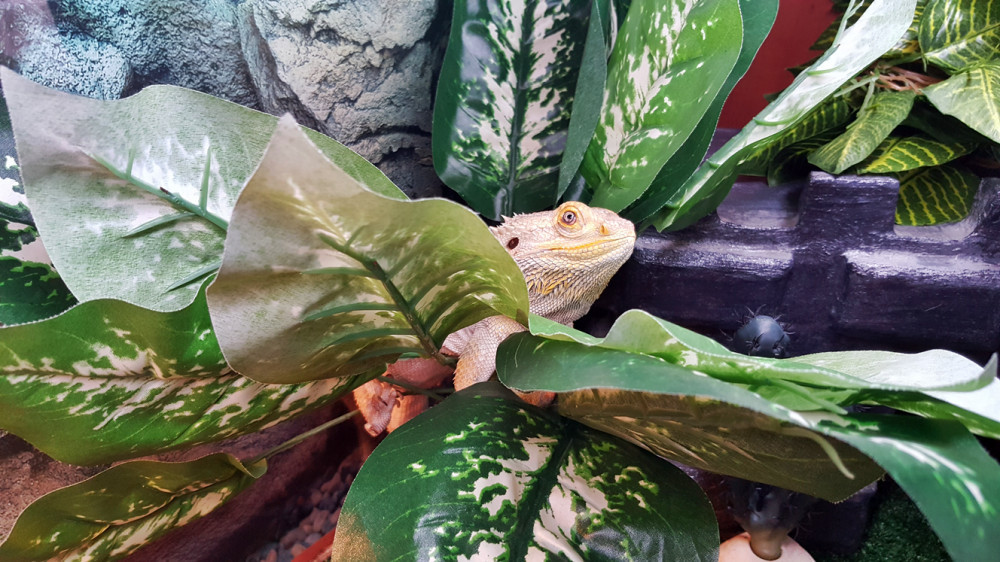There are many different types of Bearded Dragon Cages/Terrariums that you can use for your bearded dragon. This includes ready-made ones, glass tanks, melamine cages, and wood. We will have a look at the most popular Bearded Dragon Enclosures and compare the pros and cons to help you decide what will work best.
Bearded Dragon Tank – Glass
Glass tanks are quite popular and easy to find. They are not as expensive and easy to clean. Most reptile owners prefer it even though it has a few ‘issues’. The top will have to be closed with a special screen cover on which the light dome will rest. A special fitting can also be installed for the basking light. (Recommended)
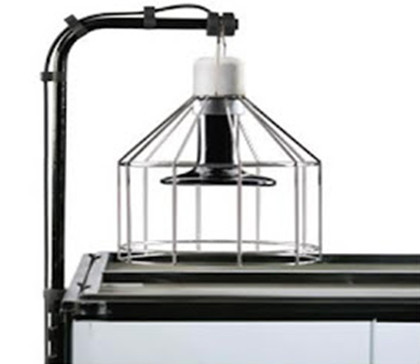
A glass tank CANNOT be closed with solid plastic, glass, or anything else, the reason being that it will cut off the circulation and cause the humidity/temperature to rise. Both these issues can cause serious health problems if the lack of fresh oxygen does not get to them first. The cover is necessary to regulate the air and temperature inside, keep bugs and so on out, and make sure your dragon does not escape.
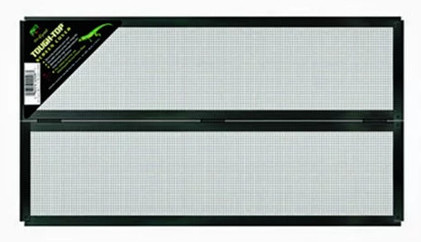
Cons
- A glass tank can be heavy once they are set up, so you will not be moving it very soon after you have set it up.
- Can be tricky to keep temperatures balanced if the tank is not big enough.
- Another problem with these cages is, bearded dragons can see their reflection in the glass. This stresses them out because they think it is another dragon wanting to fight them for territory.
- If you take your dragon out quite often for attention, it can be a bit of a hassle to remove the screen top constantly. This is the biggest reason why I changed my cages to ones with sliding doors. Got a few lamps broken while trying to pick up my dragons and manage the screen top.
Bearded Dragon Enclosure – Wooden Cages
Wood is not only nice looking but manages temperature beautifully if the right ventilation method is applied. However, wood is a magnet for bacteria if not treated properly and definitely does not work well with sand substrate. (Not that I recommend it anyway). If one uses wood, be sure to seal it properly with a sealant that is not toxic and the cage can literally last for many years. Once the wood goes dull or picks up watermarks, it can be sanded down, re-sealed, and made to look brand new again.
Cons
Wood is a magnet for bacteria. The cage Must Be sealed with a non-toxic wood sealant to make it last long, otherwise, you will end up with a smelly, water-stained cage quickly.
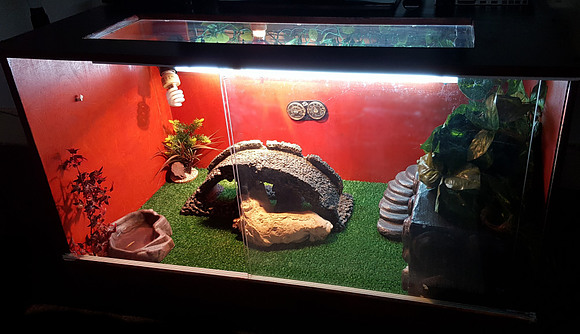
Bearded Dragon Cage – Ready-Made
Many manufacturers nowadays specialize in making Terrariums for bearded dragons that are not only practical but also nice looking. I have one myself that we use for when a beardie feels like digging in the sand and I like the idea of having front glass doors instead of a screen top. Well worth the investment.
Cons
- Their popular sizes are on the small side. If you are thinking big, it will be hard to find one.
- It all depends on the manufacturer, but many times, the accessories that go along with the terrarium, must be purchased from the same company.
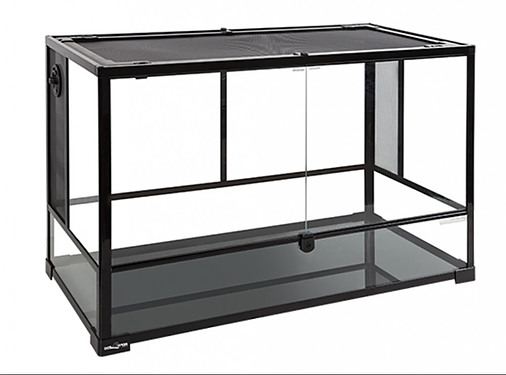
Bearded Dragon Cage – Plywood
This is the most inexpensive cage to build/buy. Lightweight and also keeps the temperature steady.
Cons
- Can buckle quite easily, especially if the wood is too thin. Bigger cages should be built with thicker plywood.
- Not recommended to stack plywood cages, especially when too thin. They work better as “stand-alone” cages.
- One spat of water and the plywood will swell up like a balloon. At least 3 layers of a non-toxic wood sealant should be applied. Also, best to put on wooden or plastic legs just in case a water spill happens. (Unless obviously, your cage is on a table or a stand already)
Bearded Dragon Cage – Melamine
Melamine cages can be made with two different types of wood, pure melamine boards or normal wood covered with melamine. Both work very well and dragons love them seeing as they reflect the light and heat in the cage. These cages can be bought or you can build them yourself. It is also the least expensive. They can last very long if looked after properly. Nowadays melamine comes in different colors, making it nice to design cages that fit in with the rest of the house decor.
Melamine cages regulate the temperature better, clean easily and the smooth surface makes it hard for bacteria to grow.
After dealing with all types of reptile enclosures for years, Melamine is my favorite and top pick. Cheap to make and still looks good, especially the darker wood-like colors.
Cons
The cage will be a write-off if water spills and seep into the spaces where the wood has been joined together. I personally seal all gaps with a non-toxic wood sealant to make the cage last a long time. Also, a great idea to screw on some short wooden or plastic legs to keep your cage off the ground, just in case of a water spill. (Will also keep the cage warmer)
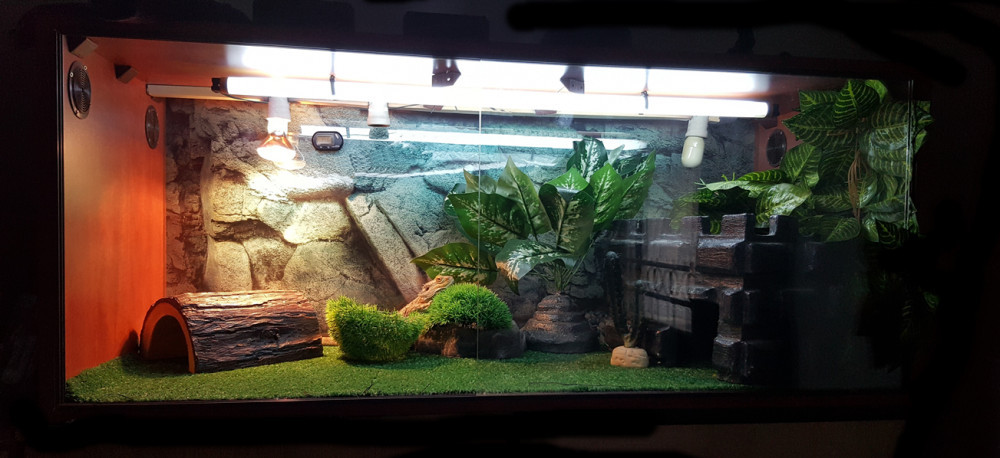
Bearded Dragon Habitat/Tank/Cage Size
You need to make sure that your dragon’s cage is the right size. When your beardies habitat is too small, it can lead to stressful situations and cause your dragon to not grow fully.
The Enclosure that your bearded dragon is kept in, should be small enough so he/she can catch its food and big enough so it can grow and stay healthy. The tank size can be determined two ways, by gallons or by size.
The length of the tank should be long enough to fit your dragon in 5-6 times from nose to tail, or bigger. The width should be 2 and a half to 3 of your dragon’s lengths.
Baby dragons need a 20-gallon tank or more. This size of a tank will help them be able to help them catch their food and give them plenty of space for growing.
10-16 inches: The early adult dragons will need a 40-gallon tank. This is so your dragon can catch its food. The larger the tank the happier your dragon will be and the better it can grow.
The bigger your dragon the bigger the tank and for 16-20 inch dragons you will need a 50-75 gallon tank.
If your dragon is 20 inches or more you will need a tank of 75 gallons minimum, but a 120 tank will work perfectly.
Personally, I go As Big as Possible when it comes to my bearded dragon enclosures. I absolutely hate to coup them up in a small space and would rather add more/stronger basking lights to accommodate for the big space. Some of my enclosures are 2 meters long with branches and a lot of room to stretch their legs. Those who have smaller cages have their own “rooms” as well, where they can get out any time to stretch their legs.
It is horrible to be in a small space couped up for long periods of time, Covid 19 has taught us that much with the lockdowns. Please provide your bearded dragon with a proper cage that is as big as you can afford, or at least take them out once a day to get some exercise and see more than just the walls of a cage.
Tip: To build a massive melamine cage, costs me the same price as a standard glass one that is twice as small. A nice, big habitat does not always have to cost a fortune if you shop and build smart. (See pic below).
Keep in mind that you will have to adjust temperature and UVB with big cages. With the cage below, I use a 100w heat bulb instead of a 50w and a longer UVB tube.
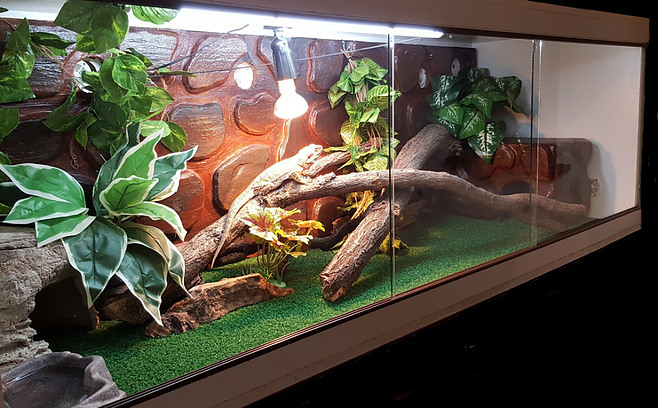
Thank you for visiting! We hope that your stay was pleasant and that the information will help you to care for your beardie.
Have questions? Please leave a comment and we will answer you as soon as possible.
Have a nice day!
